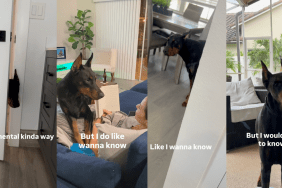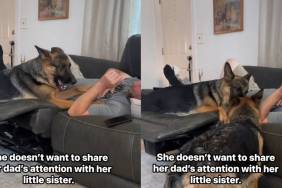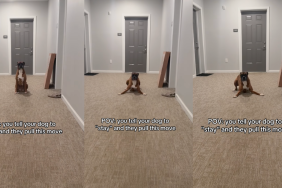Question:
Why does my dog pull on leash and how can I get her to stop?
Answer:
That’s an excellent question.
First of all, your dog isn’t really pulling on the leash so much as she’s being pulled by things in the environment that stimulate and attract her instincts. Of course, all dogs are different, so each dog will have her own motives for being pulled toward any specific stimulus, but the underlying reason is always the same: it feels more natural for a dog to move toward something that attracts her instincts than it does to walk next to you, unless walking next to you also attracts her instincts.
Okay, so now that you know why she pulls, what can you do to stop it?
Again, we have to look at it from the dog’s viewpoint. It’s much easier for her to learn a new behavior than it is to try to get rid of an old one, particularly if the old behavior already satisfies her instincts. So, instead of thinking “how do I get my dog to stop pulling?” you need to think “how can I attract her instincts?” which means that what you do has to make sense to the dog, even if it doesn’t make any sense to you.
So, start with a game, toy, or activity the dog loves. It doesn’t matter how impractical or silly you think the game is, in the long run it will help teach her to walk next to you, as long as it arouses strong, positive emotions. That’s the key.
Then take her somewhere with few distractions and start playing. If she’s still too focused on the environment to play with you, tie her up and walk away, about twenty feet or so. Don’t talk to her or even look at her, just keep a watch on her out of the corner of your eye for any signs that her focus is shifting away from the environment and back to you. Once it does, wait about thirty seconds, then come back and tease her with the toy. Make her crazy to sink her teeth into it. Then untie her and get her to chase you around. Change pace, zigzag, stop suddenly then take off again, throw in some stutter steps, even fall to the ground and jump back up. Do anything you can to build her desire to connect to the toy, praising her the whole time. This may not feel like “training”, but remember that the initial goal is to make yourself more interesting and attractive to her instincts than the environment is.
After a few days, refine these zany moves into one specific behavior: getting her to run or walk next to you, on your left, in the heel position. If she moves out of position, bring her back using the toy as a “lure“. If she keeps trying to jump up on you, that’s good! She’s connecting! Don’t correct her; just remind her, “Heel!” (in a pleasant tone), and move the toy down to her level.
Start making about turns, either to the left or to the right, keeping the toy just out of reach. Any time she loses focus remind her, “Heel!” and get her back in the game. Be sure to make the word “Heel” sound inviting. Don’t bark it at her! And remember to say it whenever she moves out of position. You’ll only need to play this game for about thirty seconds or so. Then as soon as she’s “heeling” fairly well, give her the toy and praise her so she’ll know that being in the heel position is what gets her the toy. Take a break then do it twice more.
After a few days, or maybe a week, it should carry over to her regular walks. Of course, you won’t be able to do the zany moves you were doing before, but the simple muscle memory of the about turns and the pleasant sound of the command word should help her remember her lessons. Granted, doing this takes more time and effort than it would to just put a head halter or prong collar on her, but if you do the whole exercise properly, pretty soon just walking next to you will satisfy your dog’s instincts, which is something no halter or collar could never do.









